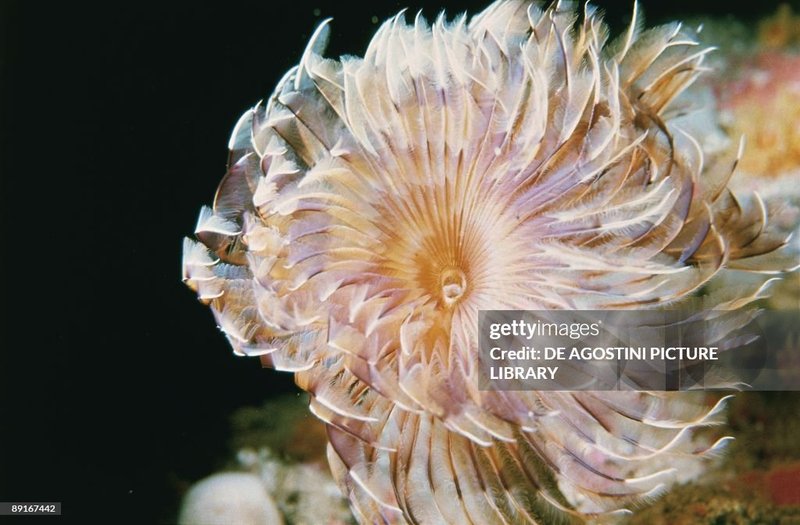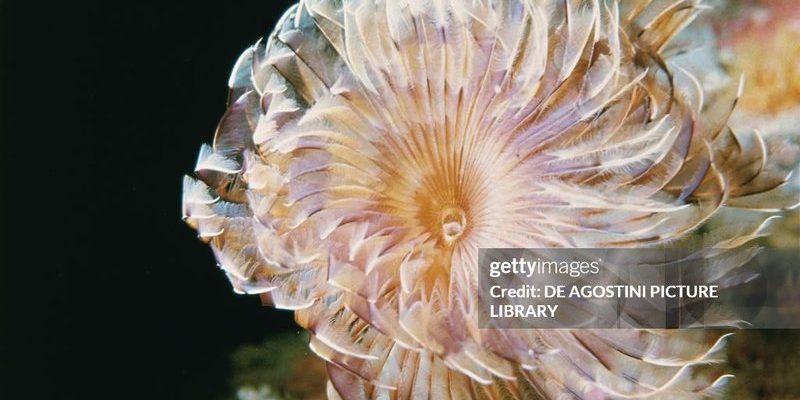
So, what happens when these charming creatures face challenges in their underwater homes? Just like an artist needs a clean workspace, sabellid fan worms thrive in healthy environments. But, unfortunately, predators and human impacts can disrupt their lives, leading to decreasing populations. That’s why it’s important to dive into the threats these amazing worms face and understand how they affect marine ecosystems.
Understanding Sabellid Fan Worms
Sabellid fan worms are fascinating marine invertebrates belonging to the family Sabellidae. These worms live in tubes they build from various materials, including sand and tiny bits of shell. Picture a small, spiraled shell that offers them protection from predators while allowing them to feed on plankton and organic matter. The fan-shaped structure—often colorful—acts like a filter, capturing food as water flows through it.
These worms can be found in various depths and habitats, from shallow coastal areas to deeper ocean floors. Their presence contributes to the overall health of marine ecosystems by serving as both prey for various species and by promoting water quality through their filtering activities. Without them, the food web balance could be disrupted.
You might be wondering how they reproduce or survive in their environment. Sabellid fan worms are known to reproduce through a process called broadcast spawning, where eggs and sperm are released into the water column, leading to external fertilization. Once fertilized, the larvae can drift in the water or settle to the ocean floor, eventually developing into adult worms.
Natural Predators of Sabellid Fan Worms
Like any other creature in the ocean, sabellid fan worms have their share of predators. They play a delicate game of hide and seek, using their tubes for protection. But what kinds of animals are on the hunt? Common predators include fish, crabs, and certain mollusks.
To put it simply, if you imagine a buffet, sabellid fan worms can often be the main course for many marine animals. For instance, wrasses are a group of fish known to nibble on these worms, drawn by the tantalizing fan structures that promise a tasty meal. Meanwhile, crabs may pry them out of their tubes, making these worms a sought-after snack.
This predation pressure can lead to significant population declines, especially if environmental conditions make it harder for the worms to reproduce or recover from losses. You could say it’s a tough life when you’re part of a delicate culinary ecosystem!
Environmental Threats to Sabellid Fan Worms
In addition to natural predators, sabellid fan worms face numerous environmental threats that can jeopardize their survival. Climate change stands as a major concern, driving factors like ocean warming and acidification, which can alter their habitats and make it challenging for them to cope.
For instance, as ocean temperatures rise, the distribution of suitable habitats for these worms may change. Warmer waters can lead to the overgrowth of harmful algae, which can smother the delicate structures of sabellid fan worms, making it harder for them to feed and thrive.
Another significant threat is pollution. Runoff from land—whether it’s fertilizers, plastics, or chemicals—can find its way into oceans, creating toxic conditions that affect not only sabellid fan worms but also the entire marine ecosystem.
The Role of Habitat Loss
Habitat loss is another critical concern for sabellid fan worms. Coastal development, dredging, and other human activities can destroy the delicate environments where these worms flourish. Imagine a cozy coffee shop suddenly being renovated into a busy mall. That’s how it feels for these creatures when their homes are taken away.
Additionally, sediment disturbance from construction or boat traffic can bury the fan worms or disrupt their feeding mechanisms. This loss creates a challenging environment for them to thrive, leading to lower populations over time.
Efforts to conserve marine environments are crucial for the future of sabellid fan worms. Protecting coastal areas and minimizing pollution can significantly help their populations rebound.
Conservation Efforts and Their Importance
Conservation efforts play a vital role in protecting not just sabellid fan worms but also the broader marine ecosystem they inhabit. Organizations and researchers are working tirelessly to monitor populations and implement protective measures.
For example, establishing marine protected areas (MPAs) helps conserve habitats where fan worms can thrive. These areas limit activities that can harm marine life, such as fishing, dredging, or pollution.
Additionally, education and awareness campaigns are crucial for engaging the public. By informing communities about the importance of sabellid fan worms and their roles in the ecosystem, we can foster better stewardship of marine environments.
You might have heard about initiatives to clean up coastal areas or manage waste better. These efforts not only benefit sabellid fan worms but also help maintain the overall health of oceans and marine life.
Scientists and Research: The Key to Understanding
Research plays a critical role in understanding the threats facing sabellid fan worms. Scientists study their populations, habitats, and interactions with other marine species. This knowledge is essential for developing effective conservation strategies.
By using technology, like underwater drones and remote sensing, researchers can gather data on where these worms thrive and how they respond to environmental changes. For example, studies on how temperature shifts affect their reproduction can provide valuable insights into their resilience.
Moreover, collaborations between scientists and policymakers are pivotal. Summaries of research findings help inform regulations that can protect delicate marine habitats. In this way, every bit of knowledge we gain helps us build a safer future for sabellid fan worms and countless other species.
As we’ve seen, sabellid fan worms are not only beautiful creatures but also essential players in marine ecosystems. They serve as indicators of ocean health while providing food for other species. However, their populations are threatened by predators and various environmental issues.
The good news is that with concerted conservation efforts and ongoing research, there’s hope for these remarkable worms. By raising awareness and protecting their habitats, we can ensure they continue to thrive in our oceans. So, the next time you think about underwater life, remember the sabellid fan worms—small but mighty contributors to the wonders of the ocean!

